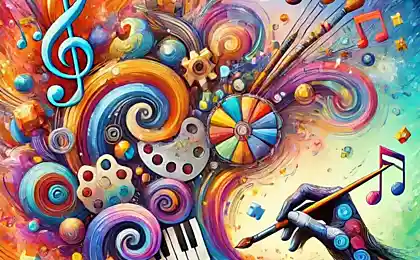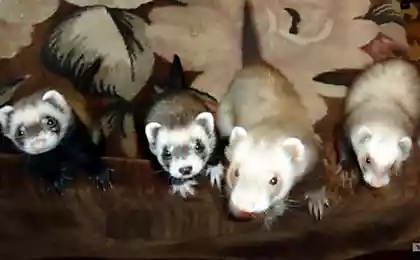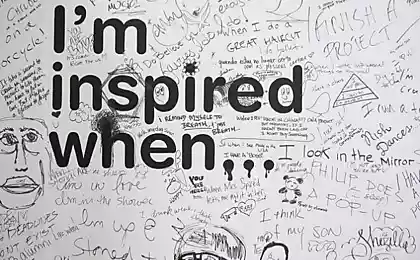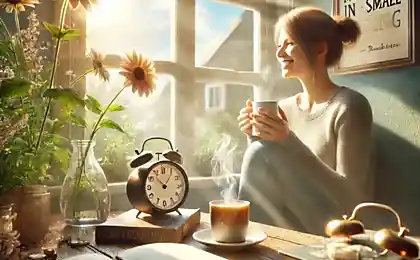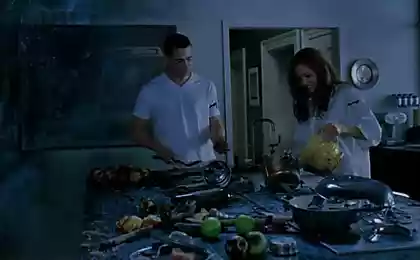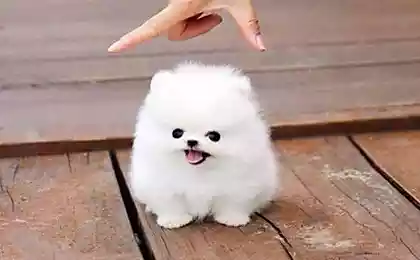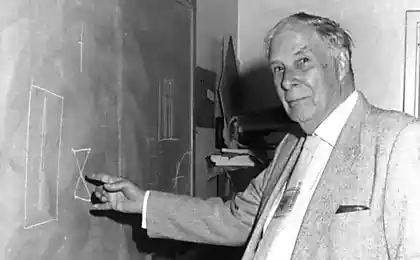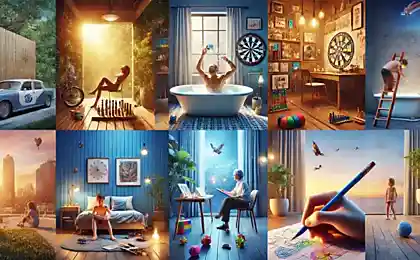256
When Routine Kills Creativity: How to Know It’s Time to Change

Every morning, millions of people wake up with the feeling that life has become an endless cycle of repetitive actions. Work, house, sleep - and again in a circle. In this mechanical existence, the creative spark gradually fades away, leaving only a void where ideas used to boil and eyes burned with inspiration.
The statistics show: According to a study by Adobe, 75% of people believe that they do not realize their creative potential. 61% of respondents said that routine is the main obstacle to creativity.
The Anatomy of Creative Decline
Creativity is not just the ability to invent something new. This is a complex neurophysiological process involving different areas of the brain. When we fall into routine, our brain goes into autopilot mode, activating the default system of the brain – the network of neurons responsible for habitual, automatic actions.
The neuroscience of routine
Research by neuroscientists shows that repetitive actions create stable neural pathways in the brain. It’s like a trampled path in the forest – the more you walk on it, the more noticeable it becomes. As a result, the brain begins to choose these “beaten tracks”, avoiding unknown routes that require additional energy.
Routine acts on creativity like a slow poison. At first, it brings comfort and predictability, but gradually deprives us of the ability to see alternatives, look for innovative solutions and generate original ideas.
Symptoms of creative stagnation
Attention! If you have any of the following signs, it is a sign that you need to change.
Emotional symptoms
A constant feeling of boredom, apathy for new projects, irritation from monotony, a feeling of “groundhog day”, loss of interest in hobbies that used to bring joy.
Cognitive signs
Difficulty generating new ideas, stereotypical thinking, avoiding complex tasks, preferring familiar solutions, decreased curiosity, problems concentrating on creative tasks.
Behavior indicators
Postponing creative projects, avoiding new challenges, resisting changes in the usual routine, reducing time for self-development, isolation in a narrow circle of interests.

The Psychology of Stagnation: Why We Resist Change
The human brain is evolved to save energy. New activities require more glucose, the main fuel for neurons. Therefore, we instinctively strive for habitual patterns of behavior, even if they do not satisfy us.
“Madness is doing the same thing over and over, expecting different results.” – Albert Einstein
In addition, fear of failure and social pressure make us hold onto the familiar and the safe. We fear judgment, criticism, loss of stability. This fear becomes an invisible cell that limits our creativity.
Strategies for restoring creativity
1. The principle of “minor violations”
You don’t need to change your whole life at once. Start with small changes in your routine. Go to work the other way, try a new cafe, listen to unfamiliar music. These “small disturbances” cause the brain to exit autopilot mode and activate the neural connections responsible for creativity.
2. Time window technique
Practical exercise
Set aside 15-20 minutes a day for a completely new activity. This can be drawing, playing a musical instrument, learning a foreign language, solving puzzles. The main thing is to do it regularly and without the goal of achieving results. Process is more important than outcome.
3. Social reset
The environment has a huge impact on our creativity. Studies show that people who regularly interact with people from different professions and cultures exhibit higher levels of creative thinking. Expand your social circle by attending events unrelated to your primary activity.

Practical tools for creative revival
Morning Creativity Method
Immediately after waking up, without checking your phone or reading the news, devote 10-15 minutes to free writing or drawing. This activates the right hemisphere of the brain and tunes in a creative way for the whole day.
"Random connections" technique
Choose two random objects or concepts and try to find a connection between them. This exercise develops associative thinking – the basis of creativity.
The One Percent rule
Improve something by 1% every day. It can be a new skill, a creative project, or just a way of solving everyday tasks. Small daily changes lead to significant results.
When is the time to make drastic decisions
Critical signals: If small changes do not work within 2-3 months, and the feeling of creative hunger only increases, it may be time for more serious changes – a change in work, a move, a radical change in lifestyle.
History knows many examples of people who radically changed their lives for the sake of creative self-realization. Van Gogh became an artist at 27, Julia Child began cooking at 36, and Ray Kroc founded McDonald's at 52. It's never too late to start over.
Creativity is not a talent that comes from birth. It is a muscle to be trained and a fire to be maintained.
Conclusion: From Survival to Prosperity
A routine is not a sentence, but a signal. Signal that it is time for change, growth, creative development. Do not be afraid to break the usual patterns, experiment, make mistakes. Every mistake is a step towards a new discovery, every change is an opportunity for a creative breakthrough.
Remember: Life is too short to spend it on something that doesn’t bring joy and unlock your potential. If today you feel that your creativity has been consumed by routine, tomorrow may be the first day of your creative rebirth.
Glossary of terms
Brain failure
A network of neurons active during rest and responsible for automatic, habitual actions. The opposite of creative brain networks.
Neuroplasticity
The ability of the brain to change its neural connections in response to new experiences. The foundation for creativity at any age.
Associative thinking
The ability to find connections between seemingly unrelated concepts and objects. A key component of the creative process.
Creative stagnation
A condition in which a person loses the ability to generate new ideas and find non-standard solutions to problems.
Cognitive flexibility
Ability to switch between different ways of thinking and adapt to new situations. A necessary element of creativity.
10 behaviors characteristic of people with low status
How to deal with someone who is always complaining
